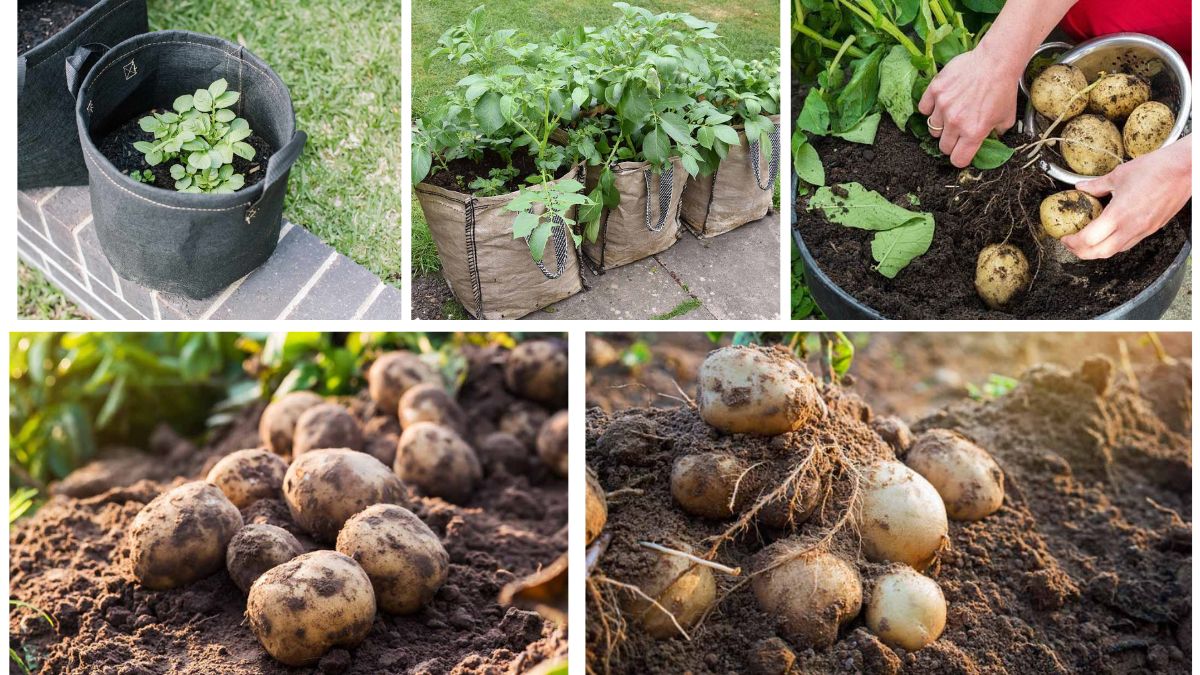Potatoes are one of the world’s most loved staple foods, and the good news is that you don’t need a large farm or garden to grow them. With the right approach, you can successfully grow potatoes in containers right at home—whether on a balcony, patio, or backyard. Container gardening not only saves space but also allows for easier control over soil quality, watering, and harvesting. This guide will walk you step by step through everything you need to know about growing potatoes in containers, from selecting the right variety to harvesting a fresh, delicious crop.
Why Grow Potatoes in Containers?
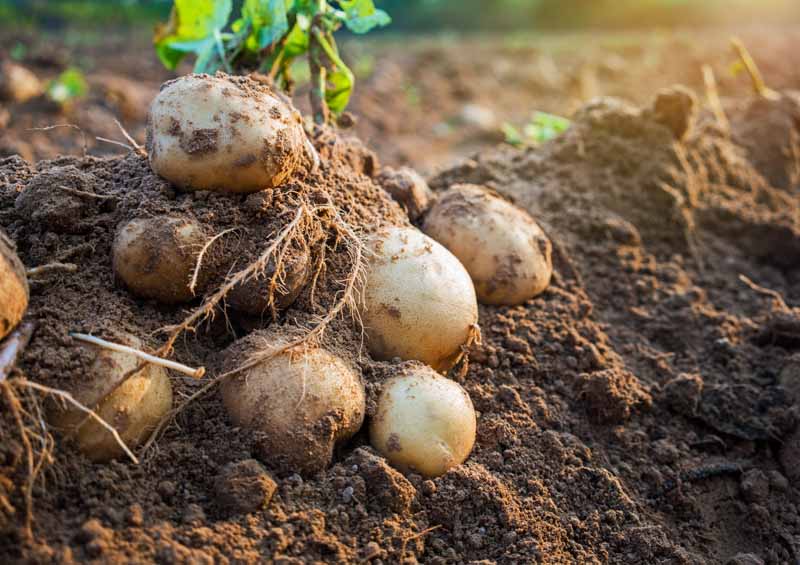
Growing potatoes in containers has gained popularity for several reasons:
- Space-saving – Perfect for urban gardeners with limited space.
- Pest control – Reduces the risk of soil-borne pests and diseases common in traditional gardens.
- Soil control – You decide the soil mix, ensuring ideal conditions for potato growth.
- Easy harvesting – No digging required; simply dump the container to collect your potatoes.
- Flexibility – Containers can be moved to catch more sunlight or sheltered from harsh weather.
Choosing the Right Potato Variety
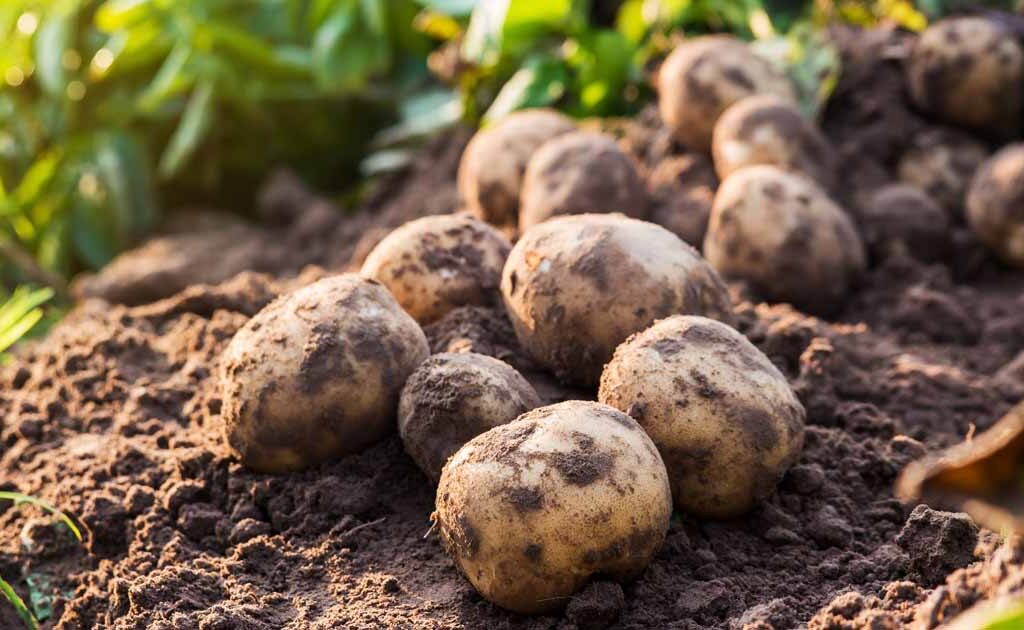
Not all potatoes are equally suited for container gardening. For the best results, choose early or mid-season varieties, as they mature faster and don’t require as much soil depth as late-season potatoes.
Top container-friendly potato varieties include:
- Yukon Gold – Creamy, yellow-fleshed potatoes with great flavor.
- Red Pontiac – Produces red-skinned, white-fleshed potatoes, excellent for boiling.
- Fingerlings – Long, narrow potatoes that thrive in confined spaces.
- Kennebec – High-yielding, versatile, and disease-resistant.
Selecting the Best Container
The container you choose plays a crucial role in your potato harvest.
- Size: At least 15–20 gallons capacity, with a depth of 12–18 inches.
- Material: Sturdy containers such as fabric grow bags, buckets, or wooden barrels work well.
- Drainage: Ensure multiple drainage holes to prevent waterlogging, which can rot tubers.
Pro tip: Fabric grow bags are highly recommended because they provide excellent aeration and prevent soil compaction, helping tubers grow healthily.
Preparing the Soil
Potatoes thrive in loose, well-drained soil that allows tubers to expand without resistance. A good mix includes:
- 2 parts high-quality potting soil
- 1 part compost (for nutrients)
- 1 part perlite or sand (for aeration and drainage)
The soil should be slightly acidic (pH 5.0–6.5). Avoid using heavy garden soil, as it compacts easily and hinders tuber growth.
Planting Potatoes in Containers
Step 1: Prepare Seed Potatoes
- Use certified seed potatoes rather than grocery store potatoes, which are often treated with sprout inhibitors.
- Cut larger potatoes into chunks with at least 1–2 eyes each, and let them cure for a day to form a callus before planting.
Step 2: Fill the Container
- Add 4–6 inches of soil mix at the bottom of the container.
Step 3: Plant the Potatoes
- Place the seed potatoes eye-side up, spaced 6–8 inches apart.
- Cover them with 3–4 inches of soil.
Step 4: Hill as They Grow
- As the plants grow to about 6–8 inches tall, add more soil to cover the stems, leaving only a few inches of leaves exposed.
- Repeat this process (called “hilling”) every 1–2 weeks until the container is nearly full.
- Hilling encourages more tubers to develop along the buried stems.
Watering and Fertilizing
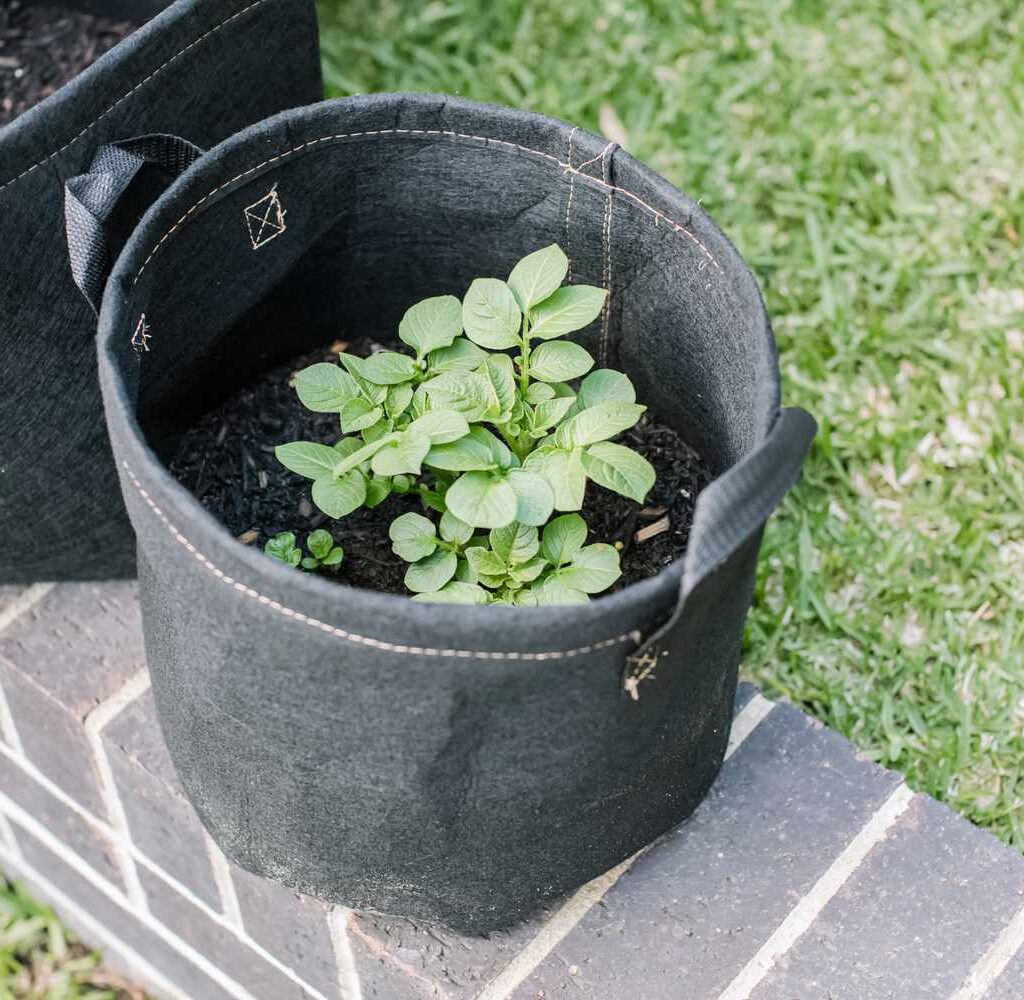
- Watering: Potatoes require consistent moisture but dislike soggy soil. Water deeply 2–3 times a week, ensuring the soil is moist but not waterlogged.
- Fertilizer: Use a balanced fertilizer or one higher in potassium (e.g., 5-10-10) for strong tuber development. Apply every 2–3 weeks during the growing season.
- Mulching: Adding a layer of straw or dry leaves on top helps retain moisture and regulate temperature.
Sunlight and Temperature Needs
- Potatoes need 6–8 hours of full sunlight daily.
- They grow best in temperatures between 60–70°F (15–21°C).
- Containers can be shifted to follow the sun or placed in a warmer spot early in the season to encourage growth.
Common Problems and Solutions
- Potato Blight (Fungal disease):
- Prevent by avoiding overhead watering and ensuring good air circulation.
- Remove affected foliage immediately.
- Pests (Aphids, Colorado Potato Beetles):
- Check leaves regularly.
- Handpick beetles or spray with neem oil.
- Rot from Overwatering:
- Ensure proper drainage.
- Water only when soil feels dry about 2 inches below the surface.
- Leggy Growth with Few Tubers:
- Caused by too much nitrogen fertilizer.
- Switch to a fertilizer higher in potassium and phosphorus.
Harvesting Potatoes from Containers
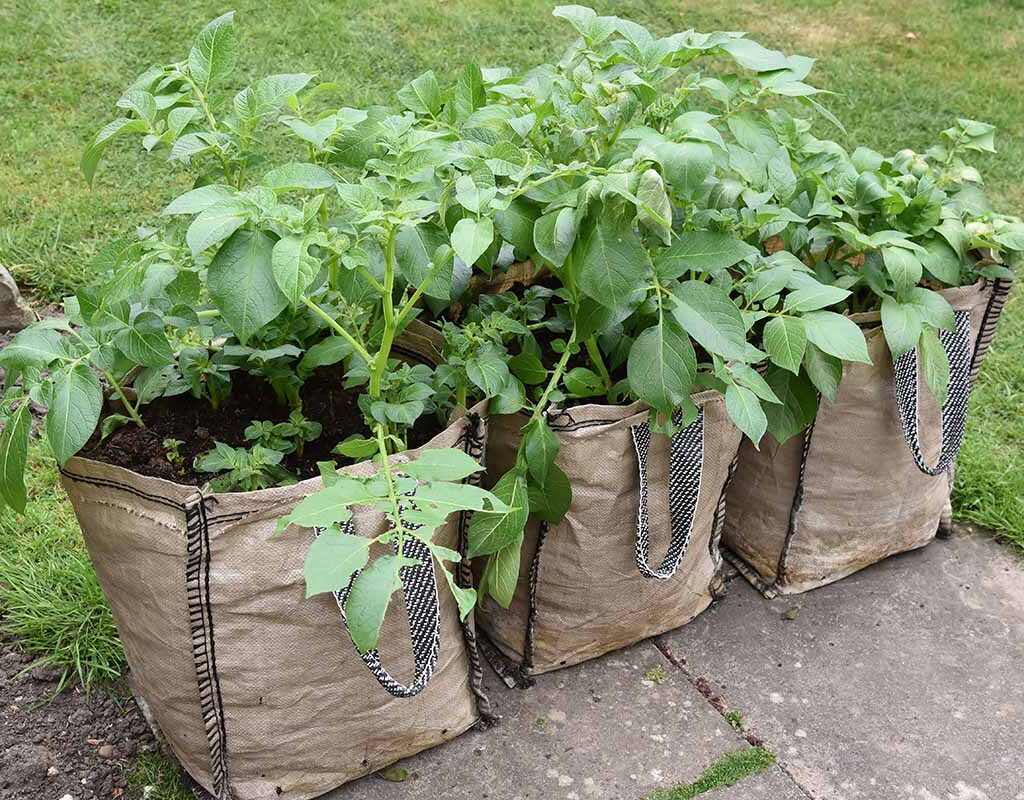
- Early harvest (new potatoes): 60–70 days after planting, when plants flower. Gently dig around the soil surface and pull out small tender potatoes.
- Full harvest: 90–120 days after planting, when plants turn yellow and begin to die back. Stop watering for about 10 days before harvesting to toughen the skins.
- How to harvest: Tip the container and empty the soil. Collect the tubers and brush off excess soil.
Storing Homegrown Potatoes
- Cure harvested potatoes in a cool, dark, well-ventilated area for 1–2 weeks.
- Store in paper bags or burlap sacks in a dark, cool (45–55°F), and humid place.
- Avoid storing potatoes in the refrigerator, as the cold converts starch into sugar, affecting taste.
Creative Container Potato Ideas
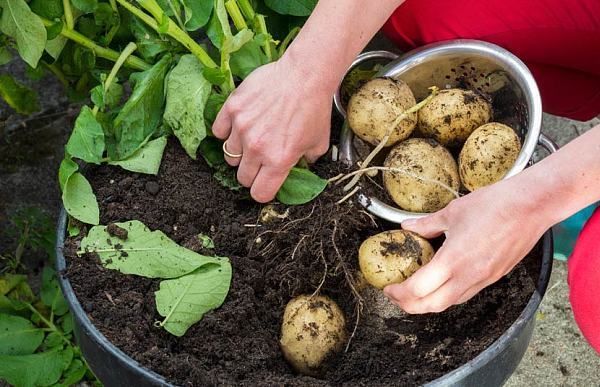
- Stacked Tire Planters: Old tires stacked and filled with soil, hilling as plants grow.
- Potato Towers: Wire mesh or wooden boxes filled with soil in layers.
- Grow Bags: Portable and collapsible, ideal for balconies.
- Barrel Planters: Wooden or plastic barrels with side openings to harvest easily.
These methods not only make potato growing fun but also maximize yields in compact spaces.
Final Thoughts
Growing potatoes in containers is a rewarding and simple way to enjoy homegrown food without needing a traditional garden. By choosing the right variety, preparing the soil, maintaining proper watering, and hilling at the right time, you can expect a bountiful harvest. Plus, container-grown potatoes are less prone to pests, easy to manage, and incredibly satisfying to harvest.
So, whether you live in an apartment or a house with limited outdoor space, container potato gardening allows you to create your own supply of fresh, healthy potatoes—all with minimal effort and maximum enjoyment.
